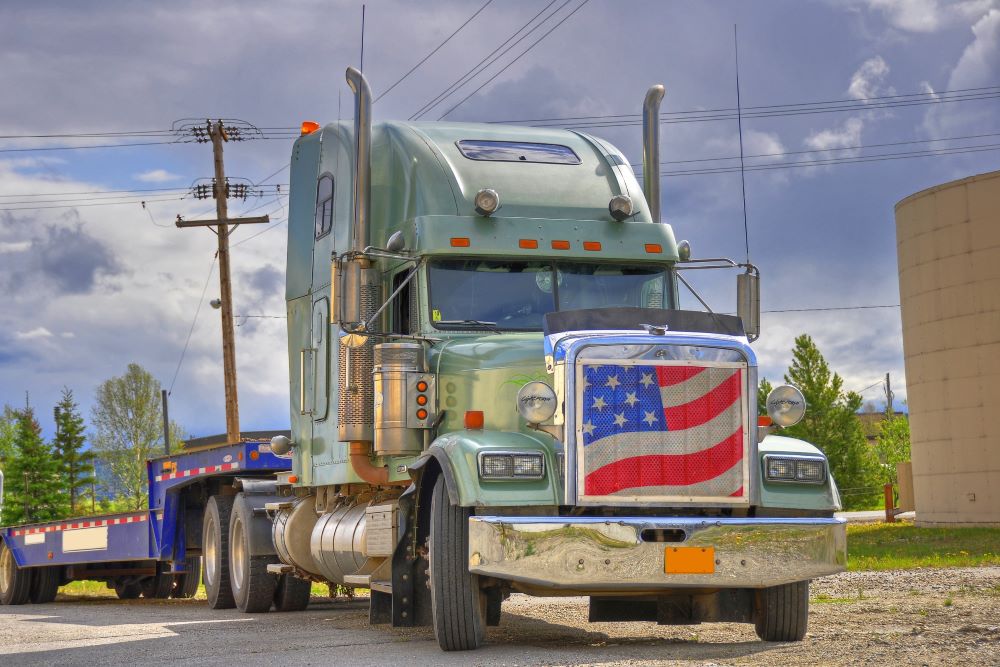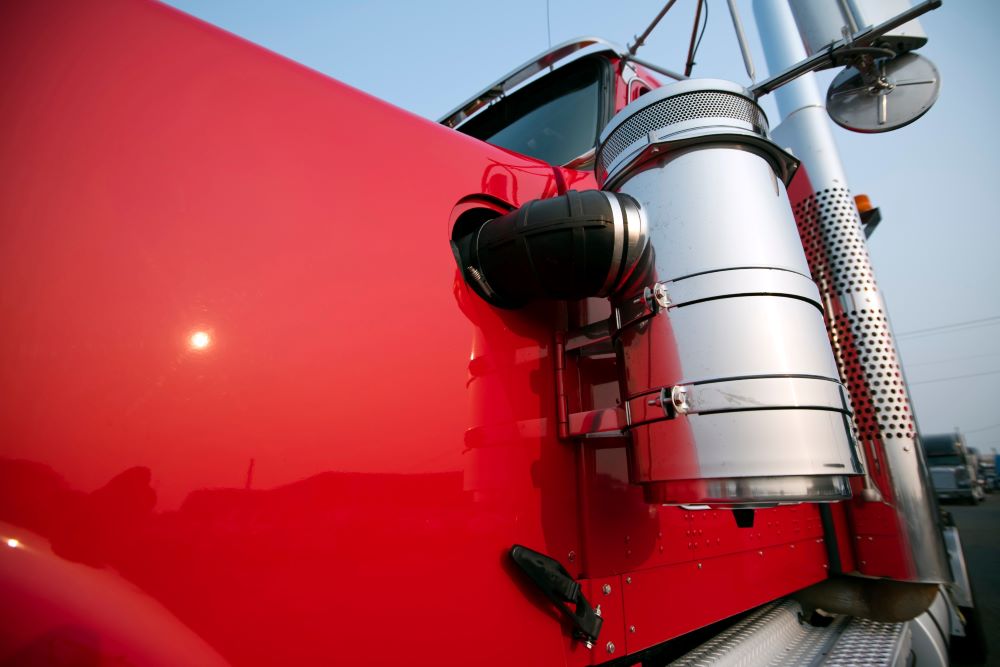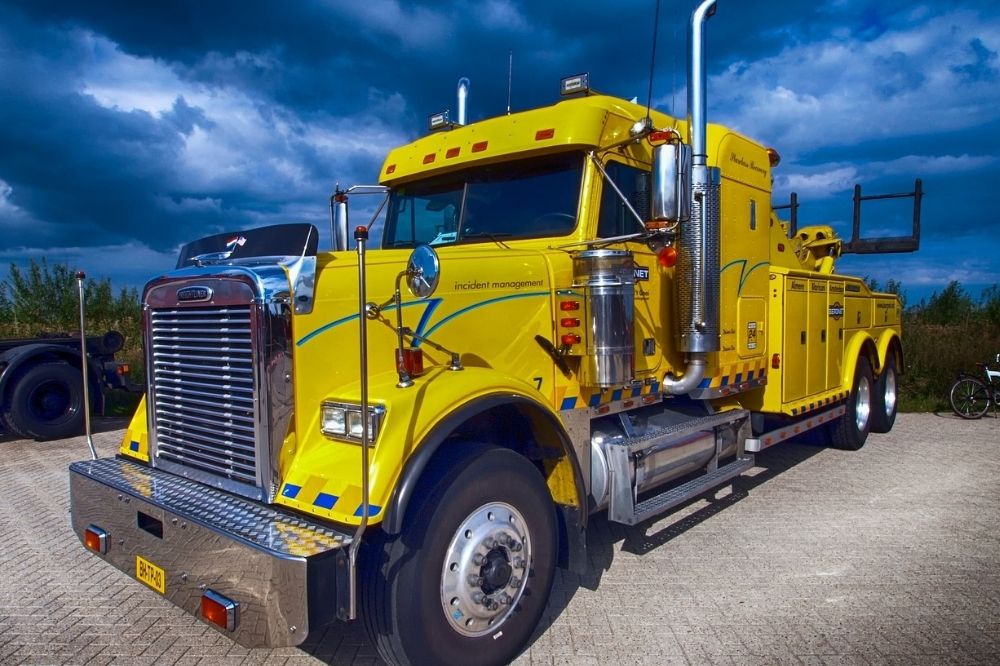Whether you’re a fleet owner looking to expand your fleet or a truck driver ready to kick start your journey as an independent operator, finding the right truck for your needs can be overwhelming. Most Popular Commercial Trucks in 2024
There are several reputable big rig brands you can purchase your truck from, and each has a variety of truck models you can work with. To make things easier, we’ve curated a list of the top semi-trucks to consider in 2024.
For each option on our list, we’ve highlighted its best features and strengths so you can weigh your options without bias.
We’ll also guide you on the top factors to consider when shopping for commercial trucks in 2024 to help you make informed decisions and settle for the perfect match. Read on to learn more.
The Importance of Choosing the Right Semi-Truck for Efficiency and Reliability In 2024.
Finding the right semi-truck for your business is essential because manufacturers build different trucks for specific tasks. Selecting the right truck can greatly influence your operation’s success.
A truck that fits your business needs will operate more efficiently, enhance productivity, reduce operational costs, and improve profit margins. This tailored choice sets the stage for long-term success in the transportation industry.

Here are key factors to consider when choosing the best semi-truck for your needs:
- Fuel Efficiency: Opt for a truck with high fuel efficiency to maximize distance traveled per gallon, reduce operational costs, and minimize environmental impact while ensuring compliance with emissions regulations.
- Technology and Innovation: Choose a truck equipped with advanced technology to enhance navigation, driver safety, and overall comfort, thereby improving performance and operational efficiency.
- Durability and Reliability: Select a truck that can reliably meet your business’s long-term demands. A durable vehicle ensures consistent performance and minimizes downtime.
- Cost of Ownership: Evaluate not only the initial purchase price but also the truck’s maintenance requirements. Understanding these ongoing costs is crucial for effective management of your business expenses.
- Environmental Sustainability: As the industry increasingly prioritizes sustainability, choose a truck that supports environmental conservation and aligns with your company’s green initiatives..
Top Semi Trucks for 2024
Here are some top semi-trucks for 2024 worth your consideration.
Freightliner Trucks
Freightliner, a top brand in the trucking industry, offers a variety of trucks for long-haul and regional driving. Known for their durability, reliability, and advanced technology, Freightliner trucks enhance driver comfort and operational efficiency.
Popular models include the Freightliner Cascadia, favored for its aerodynamic design and fuel efficiency in long-haul trucking, and the Freightliner M2, which is robust and versatile for regional and utility work.

Key Features and Strengths
- Powerful Engines: Freightliner trucks are equipped with robust engines that can handle heavy loads and long distances with ease.
- Advanced Safety Features: Safety is a top priority for Freightliner. Their trucks have cutting-edge safety features, such as lane departure warnings and collision avoidance systems, to ensure driver protection.
- Advanced Technology: Freightliner trucks also feature advanced technology systems for real-time performance monitoring, useful for fleet management.
- Comfortable Interiors: Designed for driver comfort, Freightliner trucks offer adjustable seats, modern entertainment systems, and effective air conditioning.
- Sustainability Focus: Many Freightliner models are designed with aerodynamic features to enhance fuel efficiency and reduce emissions. Some models offer alternative fuel options to support sustainability goals in the trucking industry.
Volvo Trucks
Volvo manufactures commercial vehicles for different transportation sectors. These include the construction, distribution, and long-haul trucking sectors. The brand prioritizes safety, innovation, and environmental sustainability. Its trucks are well-known for their cutting-edge technologies, fuel efficiency, and emphasis on driver comfort, reliability, and strength.
Popular models to consider are the Volvo VNL and Volvo VNR series. The VNL series is versatile and offers different configurations to meet the needs of various transportation sectors – from regional deliveries in different industries to long-haul transportation.
The VNR series is ideal for urban or regional operations. It combines maneuverability with fuel efficiency, making it a top choice among local distribution and delivery companies.
Key Features and Strengths
- Sustainable and Environmentally Friendly Options: Volvo leads the way in electric semi-truck technology, offering a range of electric models and trucks that run on alternative fuels, including natural gas. These innovations support a greener future for the trucking industry.
- Smart Technologies: Volvo trucks have cutting-edge technology for real-time performance monitoring and enhanced fleet management. They also feature advanced safety and driver assistance systems to ensure maximum safety on the road.
- Driver Comfort: Volvo trucks are designed with spacious, ergonomic interiors and amenities that prioritize driver comfort, making long hauls more enjoyable.

Kenworth Trucks
Kenworth is a prominent brand that manufactures high-quality, customizable heavy and medium-duty trucks. Its trucks are robust, designed to handle various tasks and perform consistently well. Popular models to consider include Kenworth T680 and Kenworth T880.
The T680 model has an aerodynamic design for maximum fuel efficiency. It’s a preferred choice for long-haul truck operators. The T880 series offers enhanced performance and durability. It’s ideal for heavy-duty applications.
Key Features and Strengths
- Enhanced Efficiency and Durability: Kenworth trucks robust construction withstands the rigors of heavy-duty use, ensuring long-term reliability and performance. With powerful engines and advanced engineering, Kenworth trucks can handle heavy loads and navigate long distances with ease.
- Customization: Kenworth trucks offer a high degree of customization, allowing operators from various industries to tailor their vehicles to specific needs. This flexibility ensures that each truck can be optimized for its intended use, whether for long-haul transport, regional delivery, or specialized tasks.
- Luxurious Features and Advanced Technology: The interiors of Kenworth trucks are designed with a focus on driver comfort and safety. High-quality materials, ergonomic seating, and intuitive controls create a comfortable and user-friendly environment. Advanced technology, such as collision avoidance systems, adaptive cruise control, and state-of-the-art infotainment options, enhances safety.
- Alternative Fuel Options: Kenworth is committed to supporting sustainability initiatives by offering alternative fuel options. These options, including natural gas and hybrid technologies, help reduce emissions and decrease the environmental impact of trucking operations.
Peterbilt Trucks
Peterbilt Motors Company produces high-quality, custom-built trucks with enhanced performance, durability, and driver comfort. Almost all Peterbilt trucks have distinctive, iconic designs characterized by a long, sleek hood. The commercial vehicles are suitable for various uses, such as long-haul, regional, and vocational purposes.
Popular Peterbilt trucks include the Peterbilt 579 – ideal for long-haul transportation, and the Peterbilt 389, perfect for regional heavy-duty applications.

Key Features and Strengths
- Distinctive Design: Peterbilt trucks are renowned for their iconic and unique design, characterized by a bold front grille, sleek lines, and a robust, professional appearance. This distinctive look provides an excellent canvas for customization.
- Fuel Efficiency: The Peterbilt 579 model excels in fuel efficiency, thanks to its advanced engine technologies and aerodynamic design. Equipped with state-of-the-art power-trains and features such as optimized engine settings and improved aerodynamics, the 579 model minimizes fuel consumption while maximizing performance.
- Longevity and Reliability: Built with high-quality materials and engineered to withstand rigorous use, Peterbilt trucks are designed to perform reliably over the long term. Their robust construction ensures they can handle challenging driving conditions and heavy workloads.
Final Thoughts
Your semi-truck is crucial for your trucking business. This guide will help you find the best truck for your needs.
Consider your current and future business goals and choose a truck that supports long-term growth and expansion. Fleet owners should assess their fleet needs and select trucks that meet various requirements. Reading reviews on different models can provide valuable insights into their real-world performance.
Stay within your budget, especially if you’re just starting out, to avoid financial instability. For financing options, contact us for customized commercial vehicle loans that fit your financial situation and get your business off to a strong start.






















